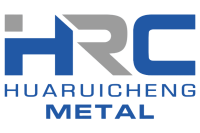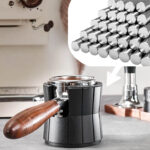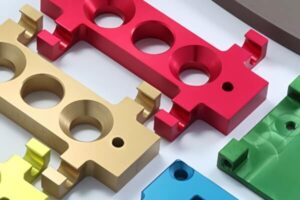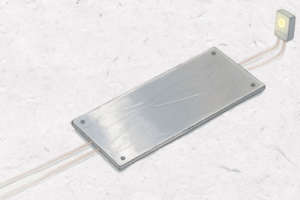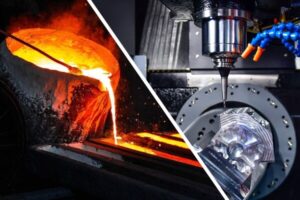Aluminum has become the preferred metal material in many product designs due to its significant advantages of high cost-effectiveness, lightweight, and ease of processing. Its electrical conductivity is a key focus of industry attention.
This article will delve into the principles of aluminum’s electrical conductivity, compare the electrical conductivity and cost differences between various grades of aluminum, and address the impact of surface treatment on aluminum’s electrical conductivity. After reading this article, you will understand how to select the appropriate grade of aluminum for your design and how to address the impact of aluminum oxide conductivity.
is aluminum conductive to electricity?
The electrical conductivity of aluminum is undeniable. According to the International Annealed Copper Standard (IACS) and professional literature data, the electrical conductivity of pure silver is approximately 106% IACS, pure copper is approximately 100% IACS, gold is approximately 70% IACS, pure aluminum ranges between 60% and 62% IACS, and iron has an electrical conductivity of 17%-20% IACS.
Based on the data, silver and gold rank first and third in terms of conductivity, respectively. However, their high costs make them unsuitable for most conventional applications. Aluminum is therefore the second-best conductive material after copper in real-world applications.
How does aluminum conduct electricity?
The principle of aluminum’s electrical conductivity can be compared to “water flow.” The essence of electrical conduction is the flow of electrons, and aluminum’s properties facilitate this flow.
Aluminum atoms have 13 electrons, with the three outermost electrons being the farthest from the atomic nucleus, and the nucleus has a weak binding force on them. At room temperature, these electrons freely roam within the aluminum, also known as “free electrons.”
When a voltage is applied to both ends of the aluminum (e.g., by connecting a battery), the electrons, which are negatively charged, are attracted to the positive terminal and repelled by the negative terminal. The free electrons move in a unified direction, forming a collective, directed flow—this is “electric current,” akin to countless water droplets flowing in the same direction to form a stream.
How to measure conductivity?
1. Quick inspection: Eddy current method (suitable for production lines and incoming material inspection)
As easy as taking your temperature with a thermometer: Use a handheld scanner-like device (eddy current conductivity meter) and place it close to the aluminum surface. Within seconds, it will display the conductivity rating (e.g., % IACS), allowing you to quickly determine if the aluminum material meets specifications.
2. Precise Testing: Four-Probe Method (suitable for laboratories, critical component testing)
As precise as measuring dimensions with a ruler: Place four fine probes on the surface of an aluminum sheet or foil, apply current, and read the data to calculate the specific conductivity (resistance). By comparing the conductivity of different aluminum materials, it helps you select the optimal solution, though it is more suitable for testing lightweight, thin conductive components.
3. Double-arm bridge method (suitable for wires and aluminum rod-type parts)
Like measuring the effect of pipe diameter on water flow: for example, when designing aluminum wires, this method can measure their resistance. The lower the resistance, the better the conductivity, and the less heat generated when current flows. It can calculate the resistance and current-carrying capacity of aluminum wires, preventing excessive heating or material waste during use, helping you find a balance between “sufficient performance” and “cost control” (e.g., thicker aluminum rods have better conductivity but higher costs).
Electrical conductivity of aluminum grades
According to data from the Aluminum Association (AA), the electrical conductivity standards for aluminum grades are as follows:
Series 1: 55-60%, Series 2: 20-30%, Series 3: 30-40%, Series 4: 25-35%, Series 6: 40-50%, Series 7: 20-25%, Series 8: Below 30%.
Series 1 (pure aluminum) is the highest: High electrical conductivity is its core advantage, making it suitable for most conductive applications.
Series 6 (aluminum alloy) is second: it combines superior electrical conductivity with mechanical properties (strength, hardness), making it suitable for specific composite application scenarios.
Other series have electrical conductivity that leads to excessive energy consumption (high resistance, severe heat generation), resulting in poor economic efficiency and safety, and are typically not used.
Conductivity and cost comparison of various models in Series 1:
| Grade | Conductivity | Resistivity (approx. Ω・mm²/m, 20°C) | Aluminum content | Cost ranking (from low to high) |
| 1050 | 55% IACS | 0.032 | 99.50% | 1 |
| 1060 | 58% IACS | 0.03 | 99.60% | 2 |
| 1070 | 59% IACS | 0.029 | 99.70% | 3 |
| 1090 | 62% IACS | 0.028 | 99.90% | 4 |
Conductivity and cost comparison of various models in Series 6:
| Grade | Conductivity | Resistivity (approx. Ω・mm²/m, 20°C) | Aluminum content | Cost ranking (from low to high) | |
| 6063 | 45% IACS | 0.04 | 97.50% | 1 | |
| 6061 | 40% IACS | 0.043 | 96.50% | 2 | |
| 6101 | 50% IACS | 0.036 | 98.00% | 3 | |
| 6201 | 52% IACS | 0.035 | 98.20% | 4 | |
Applications of Conductive Aluminum in Products
1050 Aluminum Alloy: Used in basic conductivity, daily use, and decorative fields, such as low-voltage cables, busbars, cookware, aluminum-plastic composite board substrates, USB drive casings, etc. The German WMF high-end Performa series frying pans use this material, which provides uniform heat conduction and improves cooking efficiency.
1060 Aluminum Alloy: Widely used in the fields of wires, cables, and electronic connections, such as wire conductors, cable cores, soft connections for power batteries, and lamp housings. The UL-certified residential wire conductors produced by Southwire in the United States use this material, with an annual production capacity exceeding 100,000 tons, demonstrating its practicality.
1070 aluminum alloy: Suitable for mid-to-high-end conductive and precision components, such as high-voltage busbars, precision conductive components, capacitor foils, and architectural ceiling honeycomb panels. Siemens uses this material for busbar assemblies supplied to Germany’s E.ON Energy Company’s high-voltage substations, with a conductivity of 59% IACS and temperature resistance from -40°C to 120°C, ensuring stable substation operation.
1090 aluminum alloy: Used in high-purity conductive and high-end electronic fields, such as laboratory wires, special electronic components, semiconductor sputtering targets, and superconducting cable stabilizing substrates. The low-temperature superconducting cables of the Large Hadron Collider at the European Organization for Nuclear Research use this material as a stabilizing layer to ensure good conductivity under extreme magnetic fields.
6063 aluminum alloy: With good electrical and thermal conductivity, it is commonly used in electrical conduit, heat sinks, and in the electronics industry for high-end server cooling modules to achieve rapid heat dissipation.
6061 aluminum alloy: Primarily used for laptop frames and LED heat sinks, utilizing its ultra-thin aluminum strips. Apple uses it for the frames of some laptop bodies, balancing conductivity, heat dissipation, and structural strength.
6101 aluminum alloy: Suitable for high-current transmission, such as aluminum conductive cables and charging stations. Tesla’s supercharging stations use its aluminum bars, reducing costs by 28% and improving efficiency by 15%.
6201 aluminum alloy: Highly conductive and corrosion-resistant, it is widely used in power transmission lines and cables. Some high-voltage lines in Russia use it as conductors to achieve long-distance, high-capacity transmission; some high-end portable electronic instrument housings use it to balance conductivity and weight reduction.
is anodized aluminum conductive?
Anodizing is a commonly used technique in aluminum processing. Through electrochemical action, a thick oxide film is formed on the surface of aluminum parts, significantly improving their corrosion resistance, wear resistance, and surface hardness. Additionally, anodizing can impart different decorative colors, enabling the parts to adapt to complex environments. However, the oxide film on the surface of anodized aluminum parts is not conductive.
To address this issue, we have combined 17 years of aluminum parts machining experience with practical insights from our own anodizing plant. Drawing on real-world cases from CNC machining services, we offer three practical solutions that both achieve surface treatment of aluminum components and ensure conductive performance.
Method 1: Conductive oxidation
Applicable to scenarios that require conductivity and only require light protection (such as indoor environments), such as electronic parts, connectors, conductive aluminum shells, etc. These products need to ensure current conduction while resisting slight corrosion.
Its advantages include the following: corrosion resistance is 3-10 times higher than that of original aluminum; it has a certain degree of anti-fouling properties, which can reduce oil stains and fingerprint adhesion; it can present decorative appearances such as light silver and gold; and it can also enhance the adhesion of subsequent spray paint to prevent the coating from falling off.

Method 2: Anodizing + CNC Machining
Suitable for products that require localized conductivity: First, the product undergoes anodizing, then CNC machining is used to remove the oxide layer from the areas that need to be conductive. This method preserves the overall effect of anodizing while achieving localized conductivity.
Many CNC machining factories use materials such as masking tape or rubber to cover the conductive areas, but based on our years of experience, this method poses significant risks:
1.Insufficient adhesion of the material may cause it to shift, resulting in inaccurate conductive areas;
2.Chemicals from the anodizing process may penetrate, affecting the conductive performance;
3.Removing the covering material may damage the product’s appearance.

Method 3: Customized Process (Conductive Oxidation + Anodizing)
To understand this method, it is necessary to first briefly understand the basic processes of the two techniques:
Conductive Oxidation Process: Pretreatment (degreasing, acid washing, chemical polishing) → Conductive Oxidation (immersion in chromate or chromate-free solution for 30 seconds to 5 minutes) → Post-treatment (low-temperature drying or natural air-drying);
Anodizing Process: Pretreatment (degreasing, acid washing, alkaline etching, chemical polishing) → Anodizing (applying direct current in sulfuric acid electrolyte solution, duration 10–30 minutes) → Post-treatment (dyeing, sealing, drying).
Customized process (conductive oxidation + anodizing): Pre-treatment (degreasing, acid washing, chemical polishing) → Anodizing (applying direct current in sulfuric acid electrolyte, duration controlled at 5–10 seconds) → Post-treatment (sealing, drying).
The process leverages the direct current effect of anodic oxidation, achieving a balanced outcome through precise time control. It has been tested to withstand a 300°24-hour Fhigh-temperature, high-humidity salt spray test, making it suitable for products requiring high corrosion resistance and conductivity.
Note that the conductivity of the product may slightly decrease after this process, but it still meets normal conductivity requirements. Customers should be informed in advance before use.
Summary
Aluminum is expanding its application areas thanks to its low cost and excellent electrical conductivity. The key to selecting the right aluminum grade and surface treatment method lies in matching the product to its final application scenario.
With 17 years of experience in aluminum parts processing, hrc-metal can provide you with aluminum conductive product solutions and technical support tailored to your product’s application scenario. Contact us.
